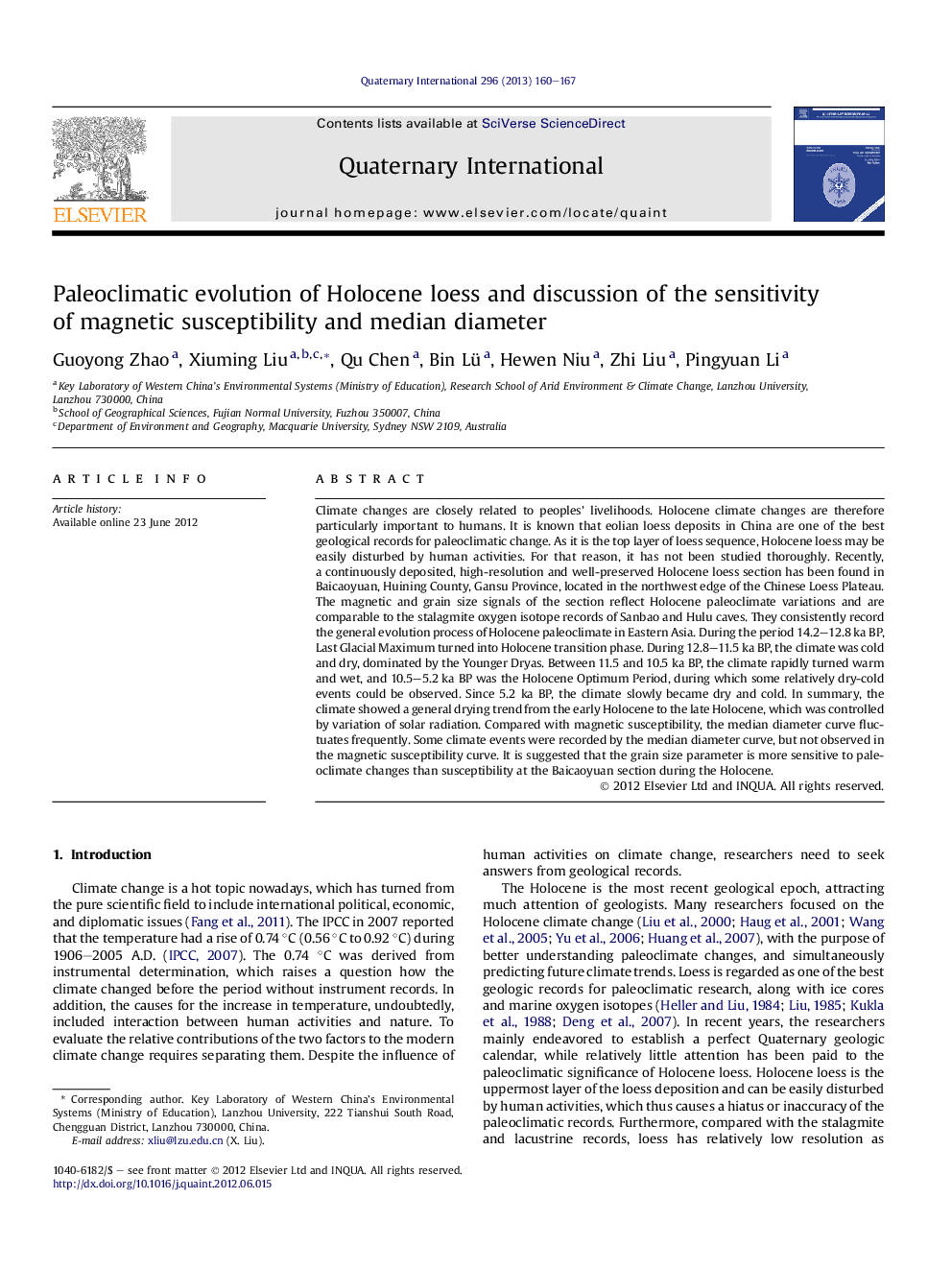| کد مقاله | کد نشریه | سال انتشار | مقاله انگلیسی | نسخه تمام متن |
|---|---|---|---|---|
| 1042221 | 1484193 | 2013 | 8 صفحه PDF | دانلود رایگان |

Climate changes are closely related to peoples' livelihoods. Holocene climate changes are therefore particularly important to humans. It is known that eolian loess deposits in China are one of the best geological records for paleoclimatic change. As it is the top layer of loess sequence, Holocene loess may be easily disturbed by human activities. For that reason, it has not been studied thoroughly. Recently, a continuously deposited, high-resolution and well-preserved Holocene loess section has been found in Baicaoyuan, Huining County, Gansu Province, located in the northwest edge of the Chinese Loess Plateau. The magnetic and grain size signals of the section reflect Holocene paleoclimate variations and are comparable to the stalagmite oxygen isotope records of Sanbao and Hulu caves. They consistently record the general evolution process of Holocene paleoclimate in Eastern Asia. During the period 14.2–12.8 ka BP, Last Glacial Maximum turned into Holocene transition phase. During 12.8–11.5 ka BP, the climate was cold and dry, dominated by the Younger Dryas. Between 11.5 and 10.5 ka BP, the climate rapidly turned warm and wet, and 10.5–5.2 ka BP was the Holocene Optimum Period, during which some relatively dry-cold events could be observed. Since 5.2 ka BP, the climate slowly became dry and cold. In summary, the climate showed a general drying trend from the early Holocene to the late Holocene, which was controlled by variation of solar radiation. Compared with magnetic susceptibility, the median diameter curve fluctuates frequently. Some climate events were recorded by the median diameter curve, but not observed in the magnetic susceptibility curve. It is suggested that the grain size parameter is more sensitive to paleoclimate changes than susceptibility at the Baicaoyuan section during the Holocene.
Journal: Quaternary International - Volume 296, 16 May 2013, Pages 160–167